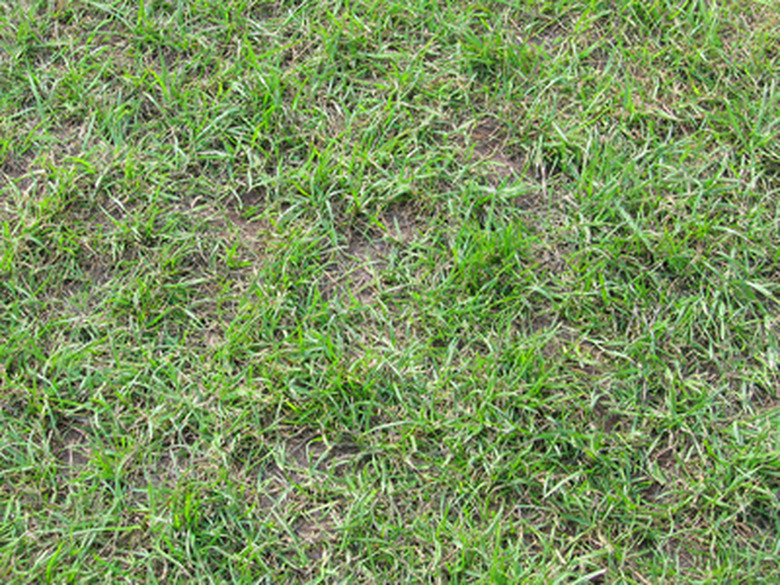What Should I Put Down First: Fertizer Or Grass Seed?
Whether you put down fertilizer or grass seed first depends on several factors and conditions. The most important factors are based on the type of grass planted, soil conditions, climate and whether the lawn is new or being re-seeded.
New Lawn Seeding
Most landscaping professionals agree that it is always best to fertilize the soil first if you are seeding a new lawn. It is also recommended to conduct a soil test so that you select the appropriate fertilizer. The results will dictate the appropriate levels of phosphorus, potassium and nitrogen to get the lawn off to a healthy start once the seeds are planted.
Established, Cool-Season Grasses
Cool-season grasses include fescues, bluegrass and rye grass. Plant seeds to patch or re-seed an existing lawn. Aerate the area where you are re-seeding the lawn. Apply a heavier dose of nitrogen in the early fall to help build fortify roots during the winter. Then apply a mid-spring fertilization with less nitrogen to help promote thicker growth during spring and summer.
- Whether you put down fertilizer or grass seed first depends on several factors and conditions.
- Most landscaping professionals agree that it is always best to fertilize the soil first if you are seeding a new lawn.
Established, Warm-Season Grasses
Warm-season grasses include Bermuda and zoysia. They benefit from fertilization prior to re-seeding in the spring. This will improve growth and greening. Then fertilize again during the late summer and early fall. Use a bit more nitrogen during late summer and fall, and a bit less during the spring. Conduct a soil test to confirm the proper nutrients your lawn requires to achieve the best results.
Grass Seed Or Fertilizer First?
Seeding a lawn is a precise business and requires careful preparation to encourage proper seed germination and growth. You can also place both fertilizer and seed into the same broadcast fertilizer and spread, but you must be careful to ensure that the two are thoroughly mixed, or else you will end up with an unequal distribution of seed and food. The best time to sow grass seeds is in early fall. If the seed has not had time to establish, the frost may kill it. If you apply weed and feed to the lawn before you seed, wait at least six weeks to apply seed.
- Warm-season grasses include Bermuda and zoysia.
- You can also place both fertilizer and seed into the same broadcast fertilizer and spread, but you must be careful to ensure that the two are thoroughly mixed, or else you will end up with an unequal distribution of seed and food.
